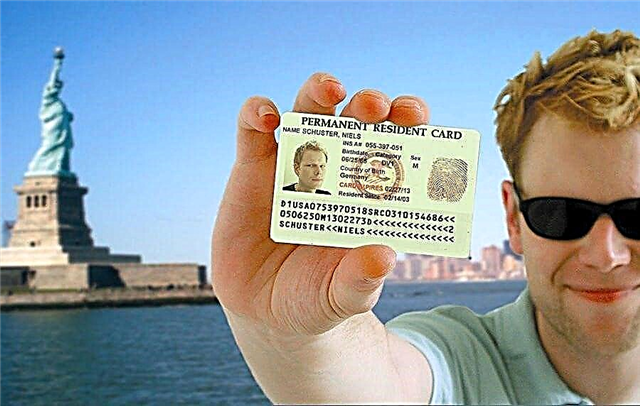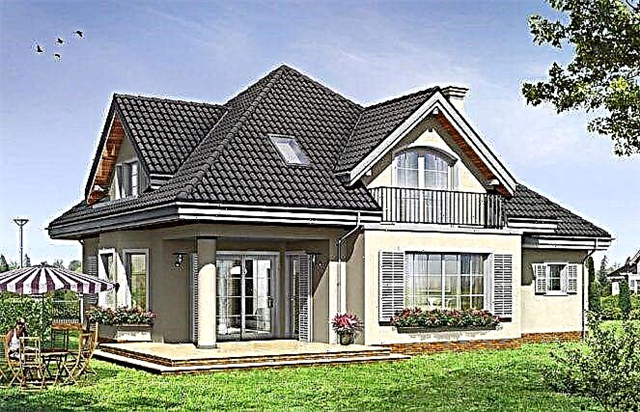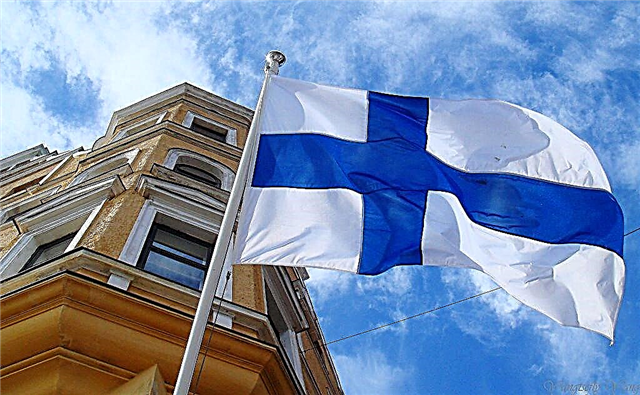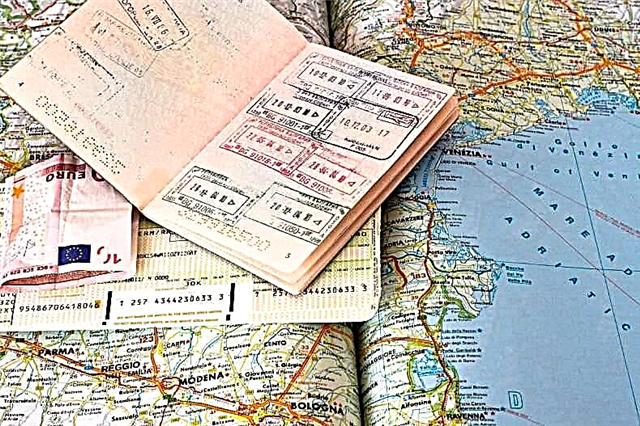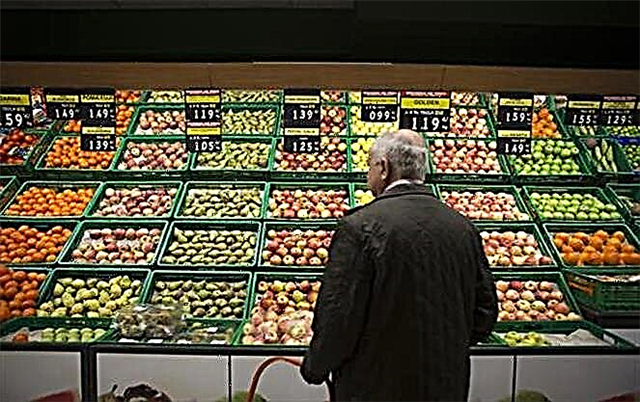Spain is one of the largest countries in the European Union. The standard of living in this state is comparable to the average European indicators. But the kingdom failed in 2021 to come close to the prosperous countries of the Community, for example, Germany, Belgium, Sweden and Austria. Prices in Spain for food, utilities, transport, purchase and rental of real estate, including the average interest on mortgages, as well as average salaries - all this important information should be studied by every person planning to move to the kingdom for permanent residence.

Features of the budget of an ordinary citizen of Spain
Spain's economy ranks 5th in the EU. However, salaries in Spain cannot be called high: according to this indicator, it is in the 20th position in Europe. The national agency Adecco has published data on the highest paid professions for mid-2021.
In ascending order of annual income, the list looks like this:
- nursing staff, engineers - 20-25 thousand euros;
- industrial workers - 26.8 thousand euros;
- scientists, technologists - 27-33 thousand euros;
- lawyers, financiers, accountants - 34-39 thousand euros;
- power engineers, management staff of private firms and state-owned enterprises - 50-53 thousand euros;
- highly qualified programmers - from 60 thousand euros.
To indirectly find out how much money you need to live in Spain, you can study information about the incomes of the indigenous population of various regions of this country. In ascending order, residents of the Canary Islands, Extremadura and Galicia (19-20 thousand euros), Catalonia, including its capital - Barcelona (24.2 thousand), Madrid (26.2 thousand) and Basque countries (27 thousand euros).
If we estimate how much it costs to live in Spain per month as a percentage of the national average earnings of 2083 euros (as of the second half of 2021), then the approximate expenses of a family of 3 people with two workers look like this:
- taxes - 30%;
- utility bills - 3.6–4%;
- food products - about 11%;
- medical insurance - from 1 to 4% depending on the type of policy.
We will dwell in more detail on the items of expenditure in the kingdom below.
Food costs
The cost of food in Spain is at the average level for the EU countries. At the same time, the value of this parameter is strongly influenced by the location of the market or stationary trade enterprise, as well as the season.
Foreigners are encouraged to stock up on food where locals do it. If food is purchased a week in advance, then it is best to come to stores on Saturdays. On the other day off - Sunday - the trading establishments are usually closed.

To find out if food is expensive in Spain, see the list below. The prices are indicated in euros.
- 1 package of bakery products - from 1 to 1.9;
- 1 loaf of rye bread - 1.5;
- 1 liter of milk - from 0.5 to 0.8;
- 1 kg of chicken fillet - from 5;
- 1 kg of beef - from 15;
- 1 kg of fish - from 10;
- 12 eggs - 1.5;
- 1 kg of potatoes - from 1.1 to 1.5;
- 2 liter bottle of Coca-Cola - 1.4;
- a bottle of beer 0.5 liters - 0.7;
- liter bottle of wine - from 3.75;
Here are the prices in euros for the food that children prefer:
- 100 gram chocolate bar - 1.55;
- 200 gram pack of cookies - about 1;
- a bottle of "Fanta" 0.33 liters - about 0.5;
- 1 liter of natural juice is about 1.
The question of how much it costs to eat in a cafe in Spain deserves a separate discussion. In the country as a whole, one adult in an institution with positive reviews can have breakfast for 8-10 euros. And lunch in the same cafe will cost him 12 euros.
In different autonomous communities of the country, the average check differs. For example, in Valencia the cost of lunch is 10.5 euros, while for a dinner for two with alcohol in a restaurant you will have to pay about 40. For comparison: about the same lunch in Ibiza (Balearic Islands) will cost 13.5-14 Euro. This information can serve as an answer to the question of how much food costs in Spain in 2021. Prices, if they change, are insignificant.
To conclude the conversation about a vacation in the Balearic Islands: a meal per day in Mallorca will cost one tourist about 50 euros. But there is an opportunity to save money by dividing really very large portions for two.
Housing costs
A foreigner in any country, including Spain, can buy a house / apartment or rent a suitable object. Costs will vary depending on the option. Let's consider them in more detail.

A person who is going to buy a house in Spain, in addition to paying the cost of real estate, will have the following expenses:
- notary fee charged for the certification of documents provided for the transaction - from 300 euros;
- fee for entering data on ownership in the State Register of Real Estate. It fluctuates in the range of 200-750 euros;
- analogue of domestic VAT - state duty IVA. Contribution is subject to 10% of the value of real estate;
- stamp duty - 2% of the price of a residential property.
A few more numbers. For example, in the IV quarter of 2021 in the city of Alicante for 150 thousand euros you can buy an apartment with a total area of 96 sq. m with 2 bathrooms and 3 bedrooms. And in the Costa Brava, in the resort town of Lloret de Mar, a 3-room apartment located on the 1st floor is being sold for 520 thousand euros. In Salou, you can buy an apartment with a total area of 74 sq. m for 143 thousand euros.
Russians who are interested in the question of how to rent an apartment in Spain, we will immediately warn that at the beginning of 2021 the segment of rental housing in the country experienced a noticeable jump in prices. As a result, the average cost of one leased square meter reached 8.9 euros, which is 8.8% more than the value of this indicator in the first quarter of 2021.
To describe the order of numbers for rental housing in the kingdom, we give examples for some regions:
- In Malaga (autonomous community of Andalusia, southern Mediterranean coast), you can rent an apartment with a total area of 84 sq. m with 1 bathroom and 2 bedrooms for 750 euros / month.
- In Torrevieja (autonomous community of Valencia, province of Alicante) an apartment with a total area of 120 sq. m with 4 bedrooms.
- On the island of Gran Canaria in its capital Las Palmas, prices are almost 2 times lower. Here you can conclude a lease agreement for an apartment with a total area of 80 sq. m with 3 bedrooms and 2 bathrooms for 600 euros / month.
Utilities must be paid by all property owners in Spain. We will briefly indicate the costs of the main ones:
- Electricity. On average, a family of 3-4 people consumes electricity for about 40-50 euros per month.
- Water supply. A family of 3 consumes water on average 20–30 euros per month.
- Gas supply. The centralized gas supply service is available, as a rule, only to residents of large settlements. In this case, the monthly fee is 20-25 euros. And to replace one imported gas cylinder, you will have to pay 17 euros.
- Telecommunication services. The cost of connecting a landline phone ranges from 200 to 300 euros. Telephone communication and the Internet cost a resident of Spain about 50 euros / month.
Transportation costs
Compared to other EU countries, the prices for public transport in Spain are noticeably lower. Although the cost of a single ticket is 2.3 euros, there is a wide variety of passes and cards for using municipal vehicles.

For example, in Barcelona 10 trips with a T-10 card will cost only 10.2 euros.
The cost of an unlimited public transport pass of any kind for 1 month is 54 euros.
As for the costs of travel by private car, they rank second in the list of monthly costs.And this is despite the relatively low cost of high and low octane fuel in Spain.
In general, motorists of this Iberian country spend 47% more on moving around its territory than their counterparts from Russia.
Education expenses
The compulsory education system in Spain is 6-level.
The first level is kindergartens. They are public and private. Institutions of the second type are very popular. They cost parents about 300 euros / month, including food.

Secondary education in Spain starts at the age of 3. Schools in this country are:
- state with free education;
- semi-private - the state finances 50% of education;
- private - training is carried out entirely on a paid basis. The amount of monthly payments here ranges from 400-900 euros.
To obtain higher education in Spain, a foreigner will also have to incur expenses. For example, for the first year of study at the University of Barcelona at the Faculty of Chemistry, a student will have to pay 2,146 euros, and at universities in Andalusia - 757 euros.
Medical cost
Medicine in Spain proves that the quality of services is not unambiguously determined by the amount of funding. In particular, each resident of this country spends 3248 euros per year on medical care. Moreover, the average life expectancy in Spain is 83 years.

For comparison: a US citizen annually spends 9882 euros on medical services, and lives on average up to 78.8 years.
The cost of medicines in the Kingdom's pharmacies is 15% lower than the average for the EU countries. Medicines are cheaper only for residents of Latvia, Estonia, Portugal and Slovakia.
Another important point. To obtain a residence permit in Spain, a foreigner needs to take out medical insurance. The most expensive (273 euros / month) will cost a full policy for a family of 4 people with 2 children aged 5 to 9 years. Single policyholders under the age of 35 will pay the least for full insurance - 41-64 euros / month.
Prices in Spain for clothes, shoes and household appliances

Average prices for clothing in Spain are comparable to the cost of wardrobe items in Russian trade enterprises. Data on the most popular items of the product range of the country's stores are presented in the list, prices in euros:
- sweaters, insulated jackets - 20;
- summer light T-shirts and T-shirts - from 5 for one product unit;
- dresses of various lengths and designs - 30–70;
- raincoats, denim jackets, autumn light jackets - 40-50.
Prices in Spain for the most popular types of shoes are presented below.
- boots with low running speed and heels, autumn and winter - from 50;
- branded quality sneakers from leading companies - about 80;
- men's high-quality leather shoes, shoes - from 60 per pair;
- women's ordinary casual shoes of classic design - up to 70;
- sandals and sandals at low speed - at least 20.
In general, prices in Spanish supermarkets for household appliances are higher than in Russian ones. Here are some examples:
- medium vacuum cleaner - minimum cost € 40;
- iron - from 22;
- sewing machine - from 65;
- electrical panel for heating the apartment:
- 5-section - 89;
- 7-section - 429.
- microwave oven - about 55;
- music center with karaoke function - 59;
- refrigerator - at least 300 euros.
Prices in Spain for leisure
The cost of living of an ordinary family also depends on how its members spend their leisure. Most often, Russians devote their free time to excursions to the sights of the Kingdom of Spain. In different regions, the cost of such a pastime is different.

For example, group excursions to Barcelona from the Costa Brava with the services of a guide will cost no more than 70 euros per person. The cost of an individual excursion for a group of 2-6 people is about 75 euros in total.
It is impossible not to mention the bullfight. The prices for this spectacle fluctuate in a very wide range from 10 to 200 euros. The more famous the bullfighter, the more expensive the performance.
How prices differ in different cities of Spain
The most expensive city in the kingdom is San Sebastian. The cost of living here is 29.3% higher than the national average. Next comes Madrid, and Barcelona closes the top 3.
The cheapest city in Spain is Ceuta. The cost of living in this city is below average by 27.7%. Teruel and Palencia follow him.
Accordingly, prices in these cities differ within the same limits.
Conclusion
Financial analysts agree that prices in Spain are lower than in other EU countries. Usually the inhabitants of this country go to supermarkets for shopping. Compared to small stores, prices are more democratic. As for the prices in cafes and restaurants, they are also quite acceptable. But you can save money by eating in a restaurant located away from tourist routes.

